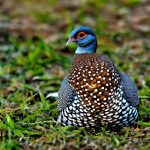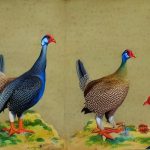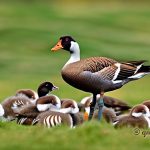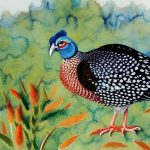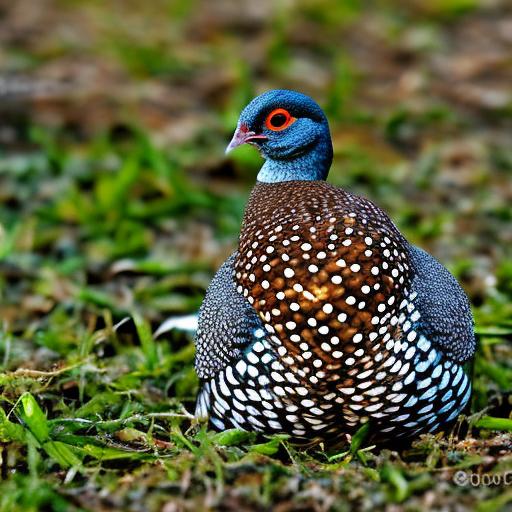Vulturine guinea fowl, also known as Acryllium vulturinum, are striking and unique birds that are native to East Africa. They are known for their vibrant blue plumage, long legs, and distinctive vulturine-like appearance. Vulturine guinea fowl are popular among breeders and enthusiasts for their beauty, as well as for their ability to control pests and insects in agricultural settings. Breeding vulturine guinea fowl can be a rewarding and profitable venture for those who are passionate about these birds and are willing to invest the time and resources into their care and breeding.
Breeding vulturine guinea fowl requires careful consideration of breeding stock, housing and equipment, breeding and incubation processes, chick care, health and disease management, as well as marketing and selling strategies. This article will provide a comprehensive guide to breeding vulturine guinea fowl, covering all aspects of the breeding process from start to finish. Whether you are a seasoned breeder looking to expand your flock or a newcomer to the world of poultry breeding, this guide will equip you with the knowledge and tools needed to successfully breed vulturine guinea fowl.
Table of Contents
- 1 Selecting Breeding Stock
- 2 Housing and Equipment for Breeding
- 3 Breeding and Incubation Process
- 4 Caring for Chicks
- 5 Health and Disease Management
- 6 Marketing and Selling Vulturine Guinea Fowl
- 7 FAQs
- 7.1 What is vulturine guinea fowl breeding?
- 7.2 What do vulturine guinea fowl eat?
- 7.3 What is the breeding season for vulturine guinea fowl?
- 7.4 How do vulturine guinea fowl breed in the wild?
- 7.5 What are the key considerations for breeding vulturine guinea fowl in captivity?
- 7.6 What are the challenges of breeding vulturine guinea fowl in captivity?
Key Takeaways
- Vulturine guinea fowl breeding requires careful selection of breeding stock to ensure healthy and productive offspring.
- Proper housing and equipment are essential for successful vulturine guinea fowl breeding, including spacious and secure enclosures.
- The breeding and incubation process for vulturine guinea fowl involves careful monitoring of eggs and providing optimal conditions for hatching.
- Caring for vulturine guinea fowl chicks involves providing warmth, proper nutrition, and protection from predators.
- Health and disease management are crucial aspects of vulturine guinea fowl breeding, requiring regular monitoring and prompt treatment when necessary.
- Marketing and selling vulturine guinea fowl can be done through local markets, online platforms, or direct sales to interested buyers.
Selecting Breeding Stock
Selecting the right breeding stock is crucial for successful vulturine guinea fowl breeding. When choosing breeding stock, it is important to select birds that are healthy, genetically diverse, and exhibit the desired traits for the breed. Look for birds with vibrant plumage, strong legs, and a vulturine-like appearance. It is also important to consider the temperament of the birds, as aggressive or skittish birds may not be suitable for breeding.
When selecting breeding stock, it is recommended to choose birds from different bloodlines to avoid inbreeding and maintain genetic diversity within the flock. This will help prevent genetic disorders and ensure the overall health and vitality of the offspring. Additionally, it is important to inspect potential breeding stock for any signs of illness or disease, such as lethargy, respiratory issues, or abnormal feathering. Only healthy birds should be selected for breeding to ensure the success of the breeding program.
Housing and Equipment for Breeding
Proper housing and equipment are essential for successful vulturine guinea fowl breeding. Vulturine guinea fowl require spacious and secure housing to thrive and reproduce. The housing should provide protection from predators, as well as adequate ventilation and natural light. A secure fencing system is also necessary to prevent the birds from wandering off or becoming prey to predators.
Inside the housing, provide nesting boxes or areas where the hens can lay their eggs in a safe and comfortable environment. The nesting boxes should be filled with clean bedding material such as straw or wood shavings to provide a suitable environment for egg laying. Additionally, provide perches or roosts for the birds to rest on at night, as well as access to fresh water and high-quality feed.
In terms of equipment, invest in quality feeders and waterers that are easy to clean and maintain. It is also important to have a reliable incubator for hatching eggs, as well as brooders for caring for the chicks once they hatch. Proper heating and lighting equipment should also be installed in the housing to ensure the birds are comfortable and healthy throughout the breeding process.
Breeding and Incubation Process
The breeding and incubation process for vulturine guinea fowl begins with selecting a suitable breeding pair or group of birds. Once the breeding stock has been selected, it is important to provide them with a suitable environment that encourages natural mating behavior. This includes providing ample space, privacy, and suitable nesting areas for the hens to lay their eggs.
When the hens have laid their eggs, it is important to collect them daily to prevent them from being damaged or eaten by other birds. The eggs should be stored in a cool and humid environment until they are ready for incubation. It is important to regularly turn the eggs during storage to prevent the yolks from sticking to the shell membrane.
Once the eggs are ready for incubation, they should be placed in a reliable incubator set at the appropriate temperature and humidity levels for vulturine guinea fowl eggs. The eggs should be turned several times a day to ensure proper development of the embryos. After approximately 26-28 days of incubation, the eggs will begin to hatch, and the chicks will emerge.
Caring for Chicks
Caring for vulturine guinea fowl chicks requires attention to detail and proper management practices. Once the chicks have hatched, they should be carefully removed from the incubator and placed in a warm and clean brooder with access to fresh water and high-quality chick starter feed. The brooder should be equipped with a heat lamp or heating pad to maintain a consistent temperature of around 95 degrees Fahrenheit for the first week of life.
It is important to monitor the chicks closely during their first few weeks of life to ensure they are eating, drinking, and growing properly. Provide them with a clean and comfortable environment free from drafts, predators, and other potential hazards. As the chicks grow, gradually reduce the temperature in the brooder until they are fully feathered and able to regulate their own body temperature.
Once the chicks are old enough, they can be transitioned to an outdoor coop or housing area with access to a secure outdoor run. It is important to gradually introduce them to their new environment to prevent stress or injury. Provide them with plenty of space to roam and explore, as well as access to fresh water, high-quality feed, and suitable shelter from the elements.
Health and Disease Management
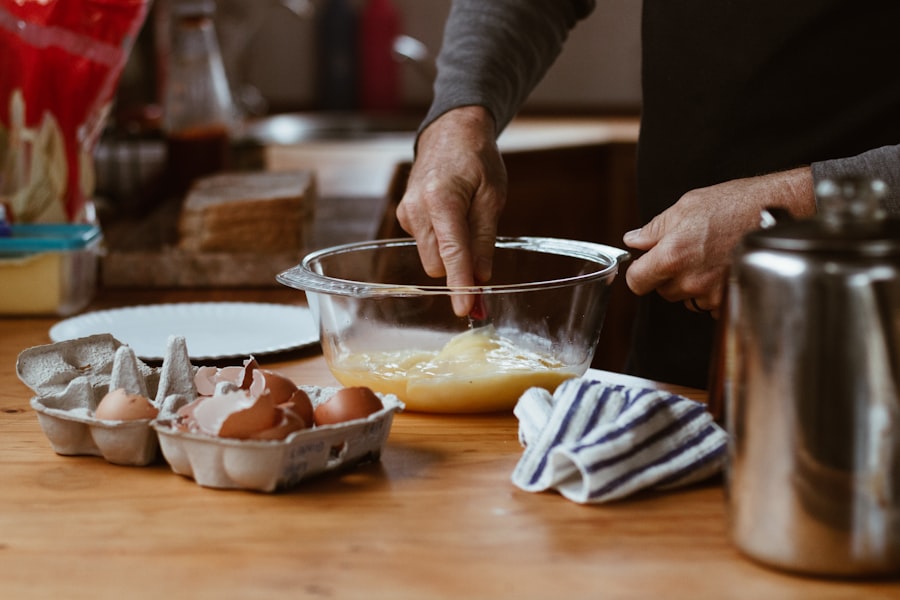
Maintaining the health and well-being of vulturine guinea fowl is essential for successful breeding and overall flock management. Regular health checks should be conducted to monitor the birds for any signs of illness or disease. Look for symptoms such as lethargy, respiratory issues, abnormal feathering, or changes in behavior. It is important to address any health concerns promptly to prevent the spread of disease within the flock.
In addition to regular health checks, it is important to implement a comprehensive disease management program that includes vaccination protocols, parasite control measures, biosecurity practices, and proper nutrition. Providing a balanced diet that meets the nutritional needs of vulturine guinea fowl is essential for maintaining their overall health and vitality.
It is also important to practice good biosecurity measures to prevent the introduction and spread of disease within the flock. This includes quarantining new birds before introducing them to the existing flock, as well as implementing strict hygiene practices such as regular cleaning and disinfection of housing and equipment.
Marketing and Selling Vulturine Guinea Fowl
Once you have successfully bred vulturine guinea fowl, you may consider marketing and selling them to other breeders or enthusiasts. Before marketing your birds, it is important to establish a strong reputation for producing healthy and high-quality stock. This can be achieved through proper breeding practices, attentive care of the birds, and maintaining detailed records of your breeding program.
When marketing vulturine guinea fowl, consider targeting niche markets such as exotic bird enthusiasts, small-scale farmers looking for natural pest control solutions, or other poultry breeders interested in adding vulturine guinea fowl to their flocks. Utilize online platforms such as social media, poultry forums, and classified ads to reach potential buyers.
When selling vulturine guinea fowl, provide potential buyers with detailed information about the birds including their lineage, health history, and any unique traits or characteristics they may possess. Offer support and guidance to new owners to ensure they are equipped with the knowledge needed to care for their new birds properly.
In conclusion, breeding vulturine guinea fowl can be a rewarding endeavor for those who are passionate about these unique birds. By carefully selecting breeding stock, providing suitable housing and equipment, following proper breeding and incubation processes, caring for chicks, managing health and disease, as well as implementing effective marketing strategies, you can successfully breed vulturine guinea fowl and contribute to the preservation of this beautiful species.
If you’re interested in vulturine guinea fowl breeding, you might also want to explore the topic of turkey coop requirements. Understanding the needs of turkeys in terms of housing and space can provide valuable insights into creating an optimal environment for your guinea fowl as well. Check out this informative article on poultrywizard.com to learn more about the essential elements of a turkey coop and how they can be applied to vulturine guinea fowl breeding.
FAQs
What is vulturine guinea fowl breeding?
Vulturine guinea fowl breeding refers to the process of raising and breeding vulturine guinea fowl, a species of large, colorful guinea fowl native to East Africa.
What do vulturine guinea fowl eat?
Vulturine guinea fowl are omnivorous and their diet consists of a variety of foods including insects, seeds, fruits, and small reptiles.
What is the breeding season for vulturine guinea fowl?
The breeding season for vulturine guinea fowl typically occurs during the rainy season, which varies depending on the region they are in. In captivity, they may breed year-round with the right conditions.
How do vulturine guinea fowl breed in the wild?
In the wild, vulturine guinea fowl form monogamous pairs during the breeding season. The female will lay a clutch of eggs in a shallow nest on the ground, and both parents will take turns incubating the eggs.
What are the key considerations for breeding vulturine guinea fowl in captivity?
Key considerations for breeding vulturine guinea fowl in captivity include providing a spacious and naturalistic environment, a varied and nutritious diet, and ensuring that the birds have access to suitable nesting sites.
What are the challenges of breeding vulturine guinea fowl in captivity?
Challenges of breeding vulturine guinea fowl in captivity may include ensuring that the birds have the right environmental conditions for breeding, preventing aggression between birds, and providing proper care for the chicks once they hatch.
Meet Walter, the feathered-friend fanatic of Florida! Nestled in the sunshine state, Walter struts through life with his feathered companions, clucking his way to happiness. With a coop that’s fancier than a five-star hotel, he’s the Don Juan of the chicken world. When he’s not teaching his hens to do the cha-cha, you’ll find him in a heated debate with his prized rooster, Sir Clucks-a-Lot. Walter’s poultry passion is no yolk; he’s the sunny-side-up guy you never knew you needed in your flock of friends!


